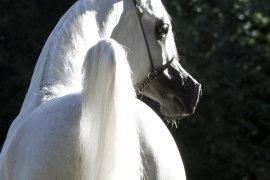Digestion of the horse as it happens.
The horse's feeding starts immediately from the lips with which the horse is able to take food and then with the tongue and teeth (to which you must pay close attention but I will explain more later) chewing takes place. During this process, the bolus is formed, a set of saliva and chopped food moistened with saliva to facilitate digestion and instead the mincing is necessary so that the hydrolyzing action of the enzymes occurs faster and easier.
Immediately after the bolus entered the stomach through the pharynx and esophagus, it is hermetically closed inside the stomach and thus begins a first phase of digestion called 'gastric digestion' due to some substances produced by the glands inside it, in particular c ' it is the beginning of the digestion of cellulose. Furthermore, the amount of food that the horse can ingest is limited and giving the horse too much food would fill it up and not having the horse the possibility to vomit would suffer very serious problems. The remaining food is then pushed into the intestine where sugars, lactose, starch and other substances are digested.
After this first digestion there is a second digestion called 'digestion in the small intestine' which is able to break down even more the parts of cellulose, and together with intestinal juices, the part of simple carbohydrates and the lipid part is more easily digested. In the third digestion there is fermentation through micro bacteria that finish the digestion work.

Agri Farm Go to the author's page
Agrifarm started its business in 1993 in Vigone, a family-run business that occupies an area of 10,000 square meters, They find in their spaces: sheds, silos, warehouses, two dryers, the mill, premises used for production, sale, storage, to the laboratory and offices.Thanks to the experience gained in the field, they put theirselves at the service of farmers with passion and determination with innovative products that can support modern agriculture.
Their goal is to continue to act as a link between the needs of the various agricultural realities and to guarantee safety and quality from seed to table.
Customer satisfaction combined with trust and mutual esteem is a central part of the company philosophy.







